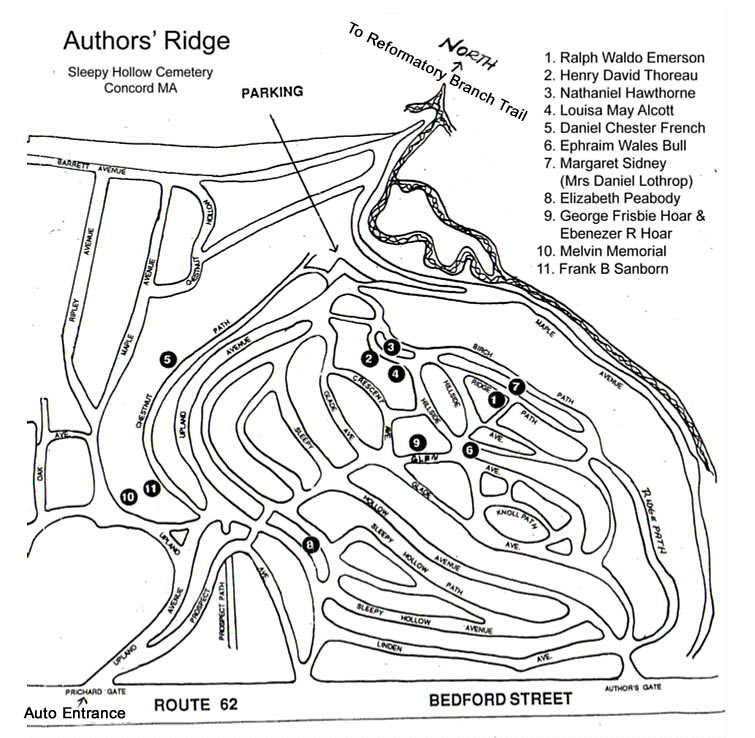Walking Tour 3 - Concord Cemeteries
1.5 mi (2.4 km), 30 minutes’ walking, round trip, + sightseeing time.
Concord was founded in 1635, the first inland town in the colony of Massachusetts Bay. Its cemeteries, with their antique tombstones, are repositories of its long history, bearing the names of early settlers, some with family names still prominent in Concord; of veterans of the Revolutionary War and of every war since; of 19th-century literary greats such as Emerson, the Alcotts and Thoreau; and of normal Concordians.
Sleepy Hollow Cemetery is most prominent and beautiful, with its Authors Ridge holding the tombs of Emerson, Alcott, Thoreau and others, but the smaller, older, simpler cemeteries in the town center, the Old Hill Burying Ground and the South Burying Place, testify to Concord’s early years and long history.
Old Hill Burying Ground
Oldest of Concord cemeteries, the Old Hill, or North, Burying Ground is on the north side of Monument Square just to the right of Holy Family Catholic Church.

This hill was the site of Concord’s first small meetinghouse (1636), the home of the Church of Christ in Concord (now First Parish in Concord), with the graveyard next to the meetinghouse. Later a larger meetinghouse was built at the bottom of the hill where the current First Parish meetinghouse now stands, leaving the entire hill for graves.
The burying ground has about five hundred graves. According to the Cemetery Supervisor, the colonists may not have marked graves during the first four years of the settlement, or else they used wooden markers which have long since disappeared. After that, they may not have marked burials, not wishing for the nearby Indians to know how many Concordians had died.
The earliest identifiable grave is that of locksmith Joseph Merriam, buried here in 1677, at a time when the colonists decided there was no longer any danger from the Indians, who were friendly.

This south-facing hillside may have been selected as a burying ground because the land was not good for cultivation, and its southern exposure to the sun meant that it was among the first places in the village to thaw in the spring. This allowed the earliest possible burial for those who had died during the winter when digging graves was not possible.
John Jack's Grave
On the far (north) slope of the hill, half-way down and a little to the left, stands the gravestone of John Jack, a man born free in Africa but enslaved and brought to colonial America.
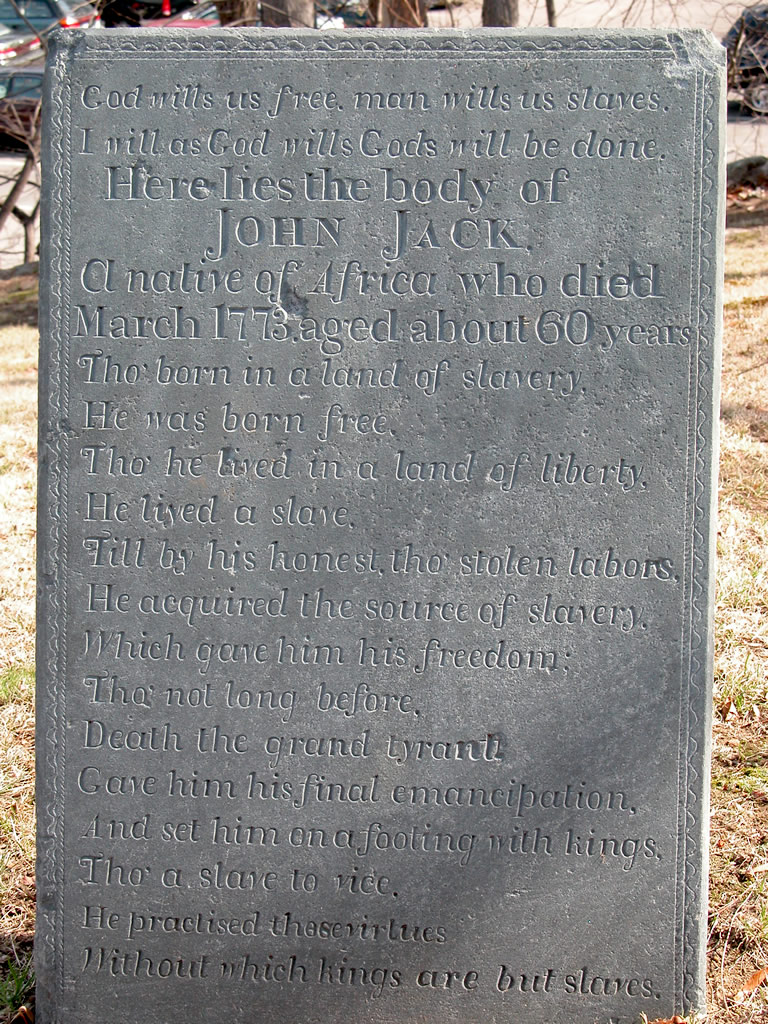
He worked at his trade of a shoemaker in Concord, part of his life at the Benjamin Barron house (249 Lexington Road—see Walking Tour 2). Eventually saving enough money from secret work, he bought his freedom. His epitaph was written by Reverend Daniel Bliss (1714-1764), who is buried in the lower of the two table-like rectangular tombs at the top of the hill.
God wills us free, man wills us slaves. I will as God wills Gods will be done. Here lies the body of John Jack. A native of Africa who died March 1773 aged about 60 years. Tho’ born in a land of slavery, He was born free. Tho’ he lived in a land of liberty, He lived a slave. Till by his honest, tho’ stolen labors, He acquired the source of slavery. Which gave him his freedom. Tho’ not long before, Death the grand tyrant Gave him his final emancipation, And set him on a footing with kings, Tho’ a slave to vice, He practiced those virtues Without which kings are but slaves.
South Burying Place
This is a smaller cemetery than either of Concord’s other two, on the southwest side of the Mill Brook at the corner of Main Street and Keyes Road, on long block southwest of Monument Square.
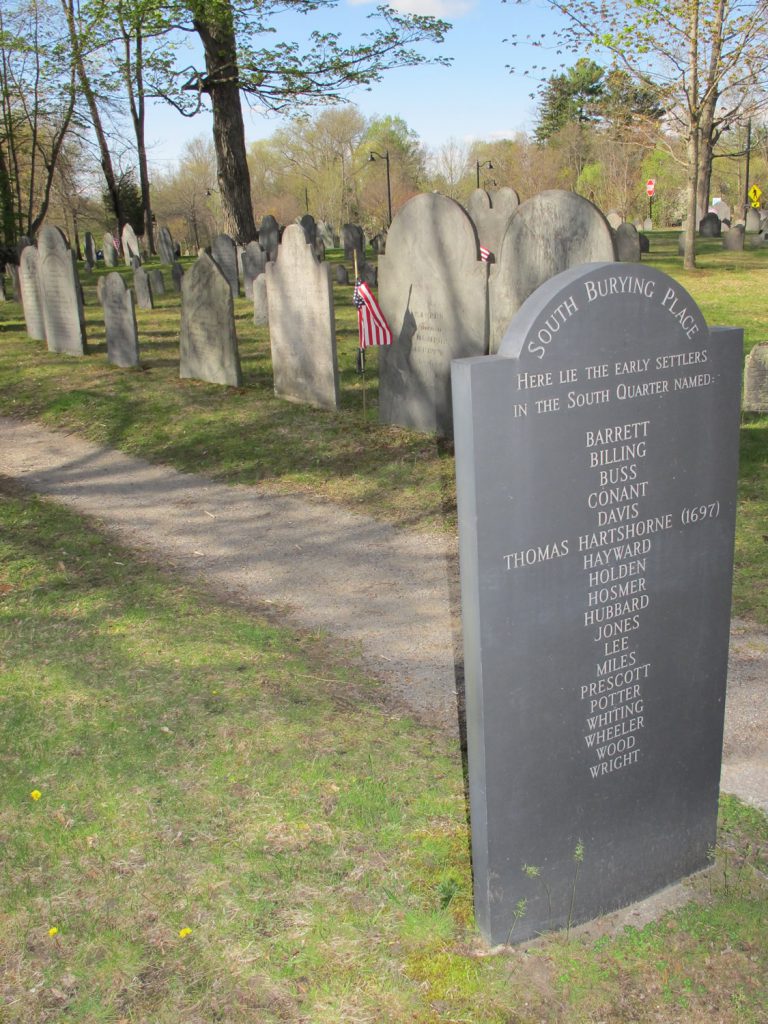
Town lore holds that the South Burying Place was established after the Old Hill Burying Ground because it was thought of ill omen to transport a corpse over running water. (The Mill Brook runs beneath Main Street just southwest of Monument Square. In colonial times, this block of Main Street was a narrow road at the edge of the Mill Pond.)
The dark slate slab at the entrance, a modern addition, lists the names of prominent Concord families whose members are interred here: Barrett, Billing, Buss, Conant, Davis, Hartshorne, Hayward, Holden, Hosmer, Hubbard, Jones, Lee, Miles, Prescott, Potter, Whiting, Wheeler, Wood, and Wright.
Sleepy Hollow Cemetery
Concord’s largest, most famous and beautiful cemetery is one long block (5-minute walk) northeast of Monument Square along Bedford Street.
On foot, enter the Bedford Gate at the corner of Bedford Street and Court Lane (map). (The sign directing visitors to the Prichard Gate farther to the right along Bedford Street is for autos, not pedestrians).
Inside Bedford Gate, turn right and walk northeast in the same direction for five minutes to the Melvin Memorial (see below). The grave of its sculptor, Daniel Chester French, is on the ridge behind the Memorial, and Authors Ridge is just beyond (map).
If you’re driving, from Monument Square, follow Bedford Road (MA Route 62) and proceed 1/4 mile (400 meters) to Prichard Gate, the cemetery’s auto entrance on the left (opposite 148 Bedford St). Enter the cemetery, go straight past the flagpole to a T-intersection at which you must turn left onto the narrow one-lane, one-way road to Authors Ridge. There's a stone marker pointing the way.
At the foot of Authors Ridge, there's enough room to park a few cars.
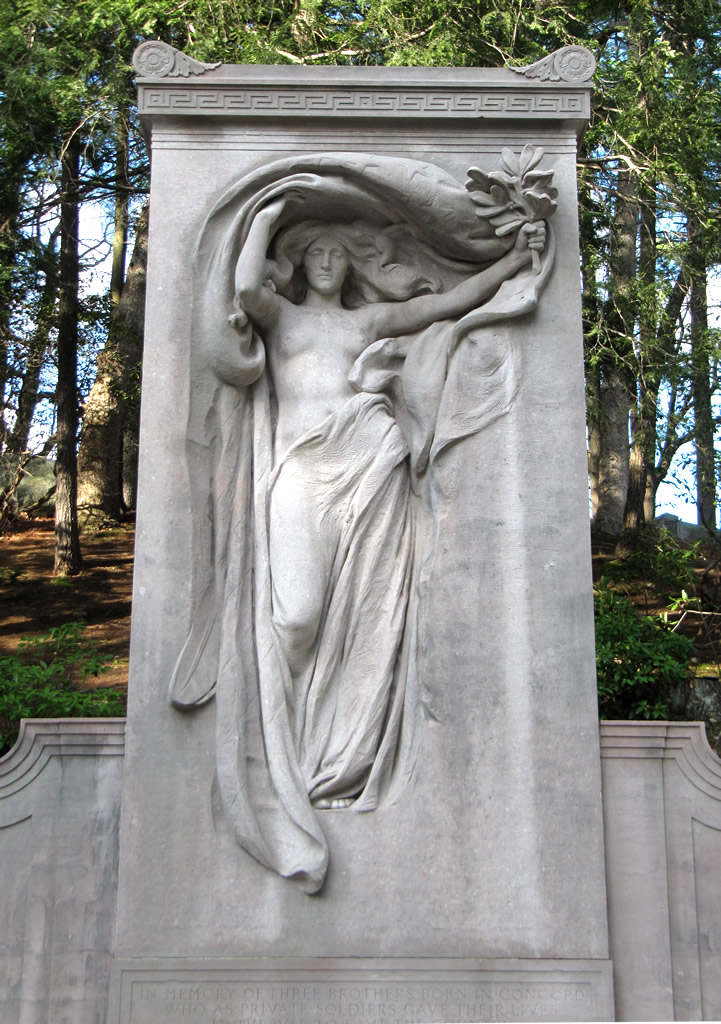
Mourning Victory, by Daniel Chester French, centerpiece of the Melvin Memorial
Designed as an early American example of the garden cemetery, Concord’s Sleepy Hollow Cemetery was inspired by Ralph Waldo Emerson’s philosophies as well as Sir Christopher Wren’s earlier idea of designing landscaped burial grounds located outside of churchyards and city centers.
Authors Ridge holds the graves of Louisa May Alcott, Ralph Waldo Emerson, Daniel Chester French, Nathaniel Hawthorne, Henry David Thoreau, and their families; Harriet M Stone Lothrop ("Margaret Sidney") and Daniel Lothrop; Ephraim Wales Bull and son; and other worthy Concordians.
Melvin Memorial
Be sure not to miss the Melvin Memorial, a large, fine funerary monument in honor of three brothers of the Melvin family who died in the US Civil War.
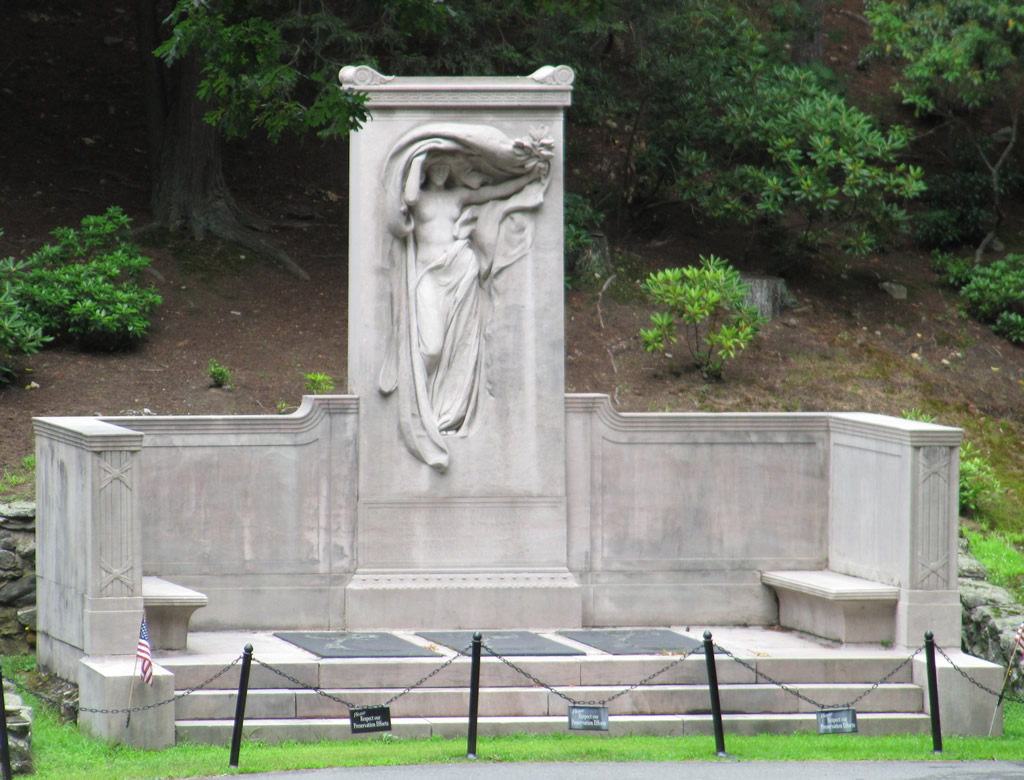
The memorial was commissioned by the fourth brother, who survived the war to return to Concord. The sculpture, Mourning Victory, is among the most affecting by Daniel Chester French, who also created The Minute Man by Concord's Old North Bridge, as well as the statue of Abraham Lincoln ("Seated Lincoln") in the Lincoln Memorial in Washington, DC. Daniel Chester French and Mary French are buried atop the ridge behind the Melvin Memorial (see below).
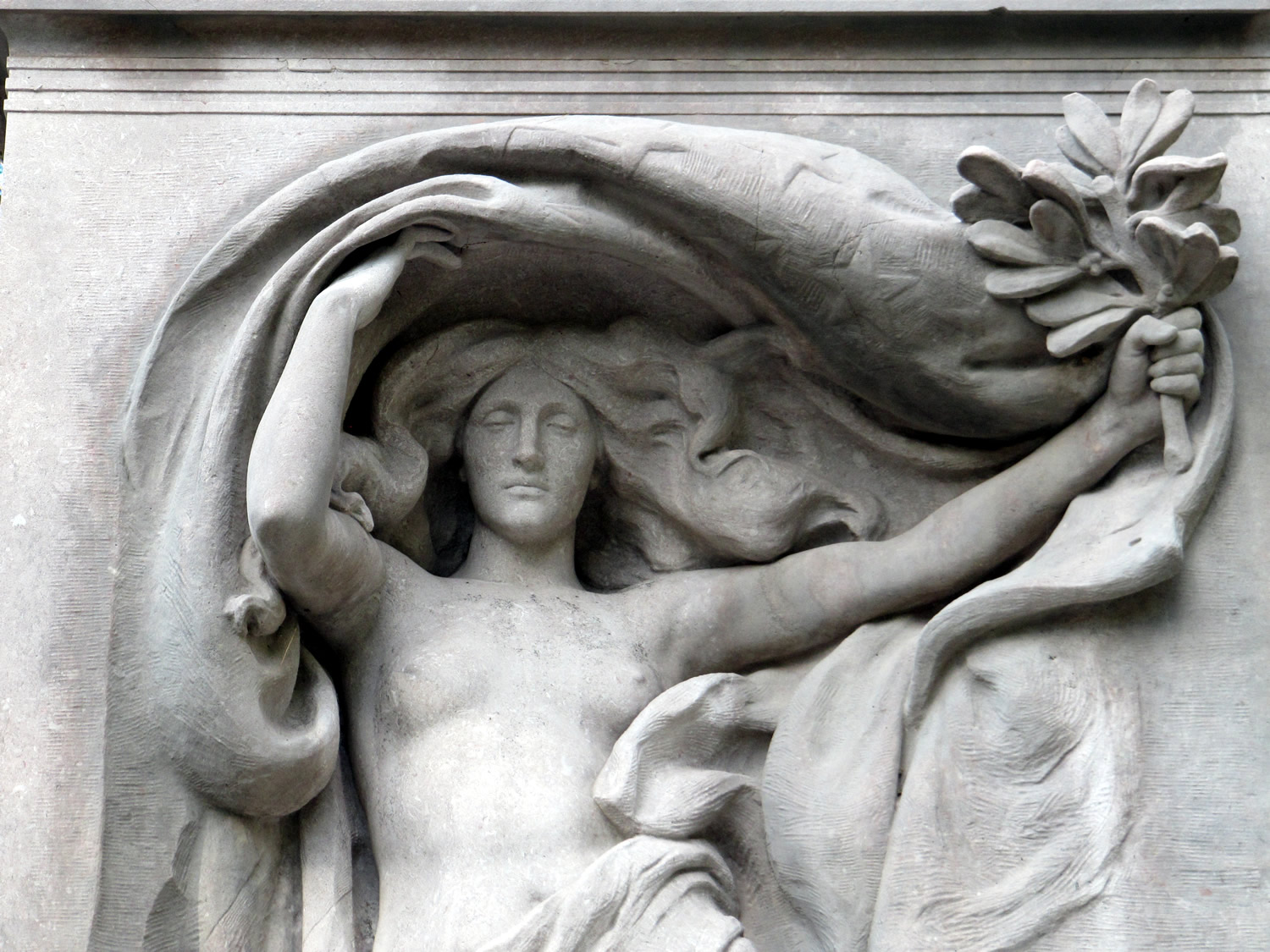
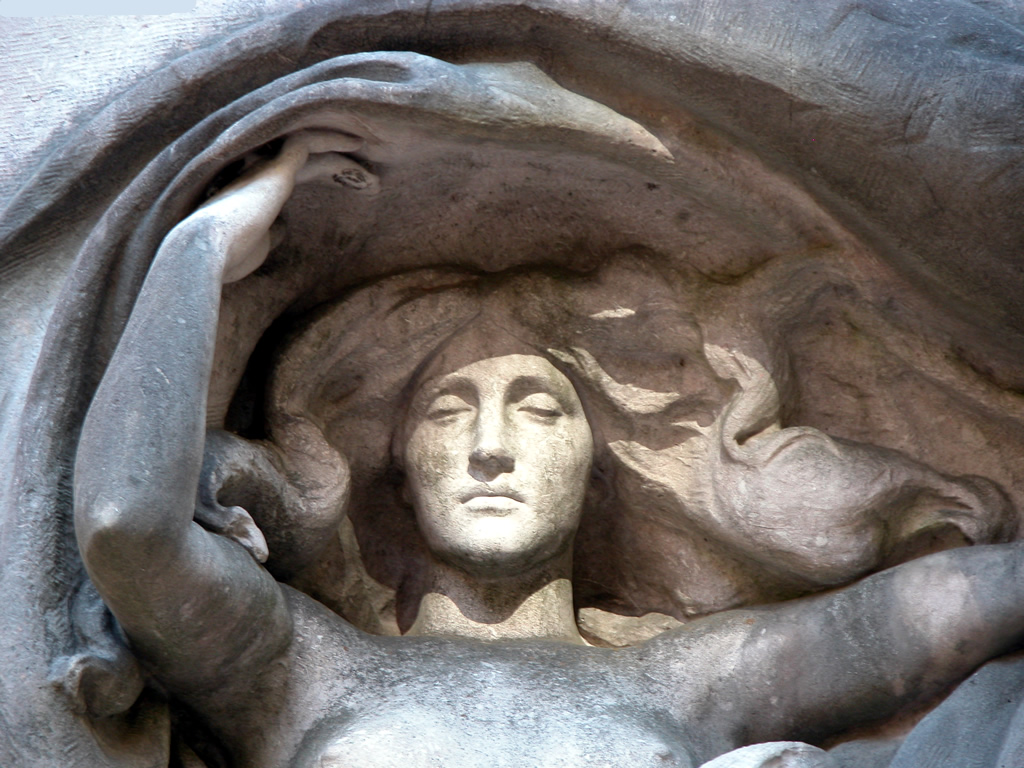
Authors Ridge
Here's where you'll find the graves of the Hawthornes (Nathaniel, Sophia and Una), the Thoreau family (including Henry David), the Alcotts (including Louisa May), and the Emersons (Ralph Waldo, Lidian, and others).
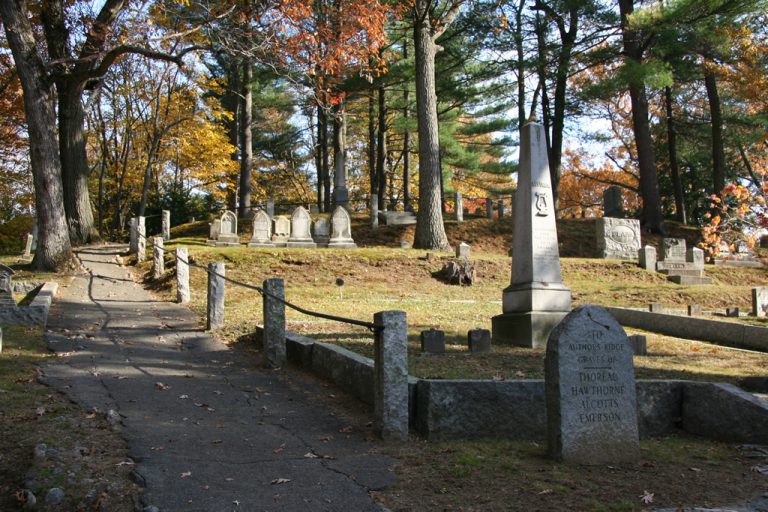
The graves are listed below in the order in which you'll come to them along this path.

Look for this marker
Hawthorne Family
At the top of the ridge, on the left, are the graves of the Hawthornes: Nathaniel, Sophia and Una. Nathaniel Hawthorne was buried here alone in 1864. Sophia Hawthorne died in London in 1871, followed by their daughter Una in 1877. Both were buried in London's Kensal Green. By the early 2000s, their graves had been neglected. In 2006 they were disinterred, brought from London to Concord, and reinterred next to Nathaniel on July 26.
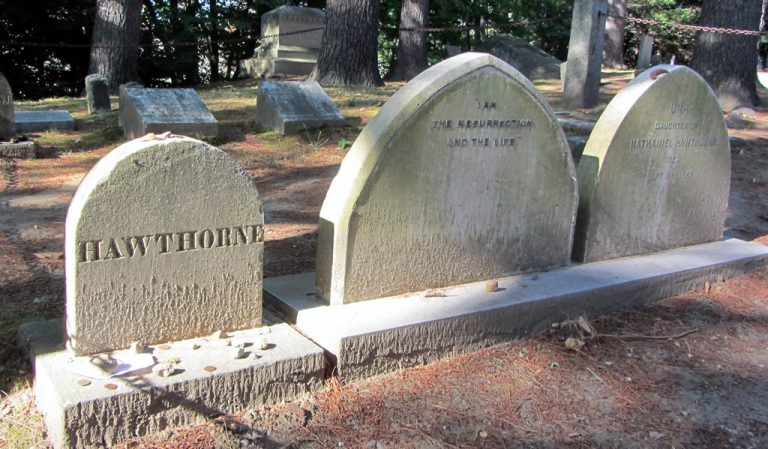
The Hawthornes
Thoreau Family
Henry’s modest tombstone is always decorated with votive offerings: pens and pencils, notes, pebbles, flowers, pine cones. The gifts left by ardent admirers are periodically cleared away.
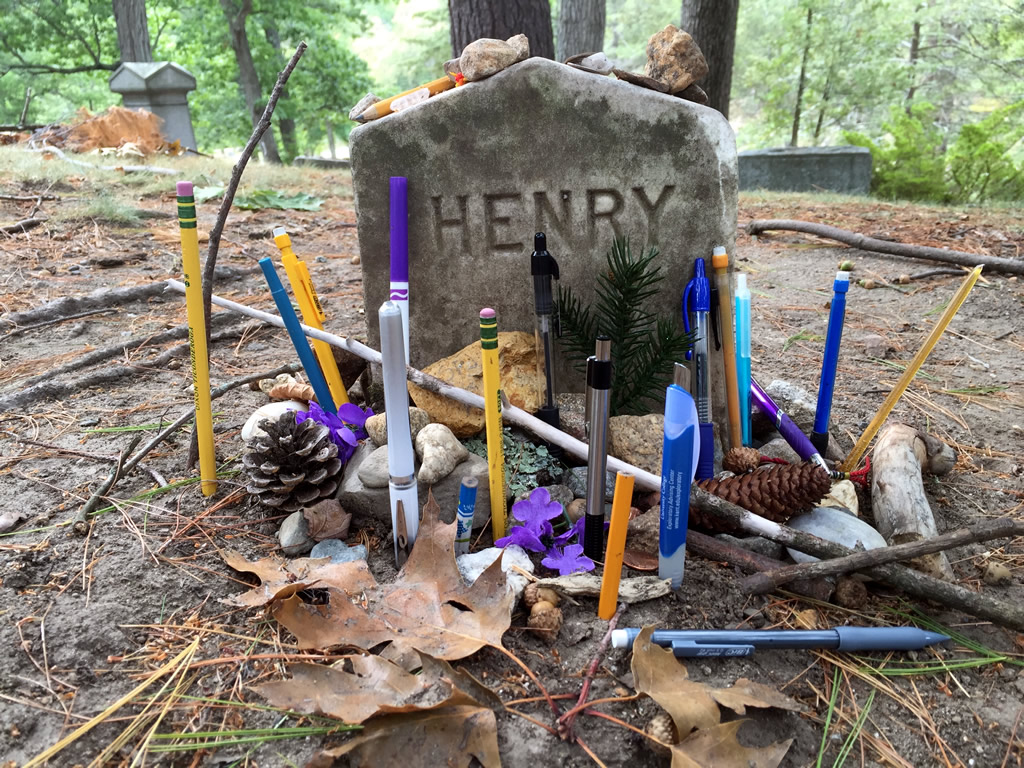
Henry David Thoreau Grave
Alcott Family
Like Henry David Thoreau’s, Louisa May Alcott’s grave receives many votive offerings. Her mother Abba, father Amos Bronson, and her sisters are buried in the family plot also.
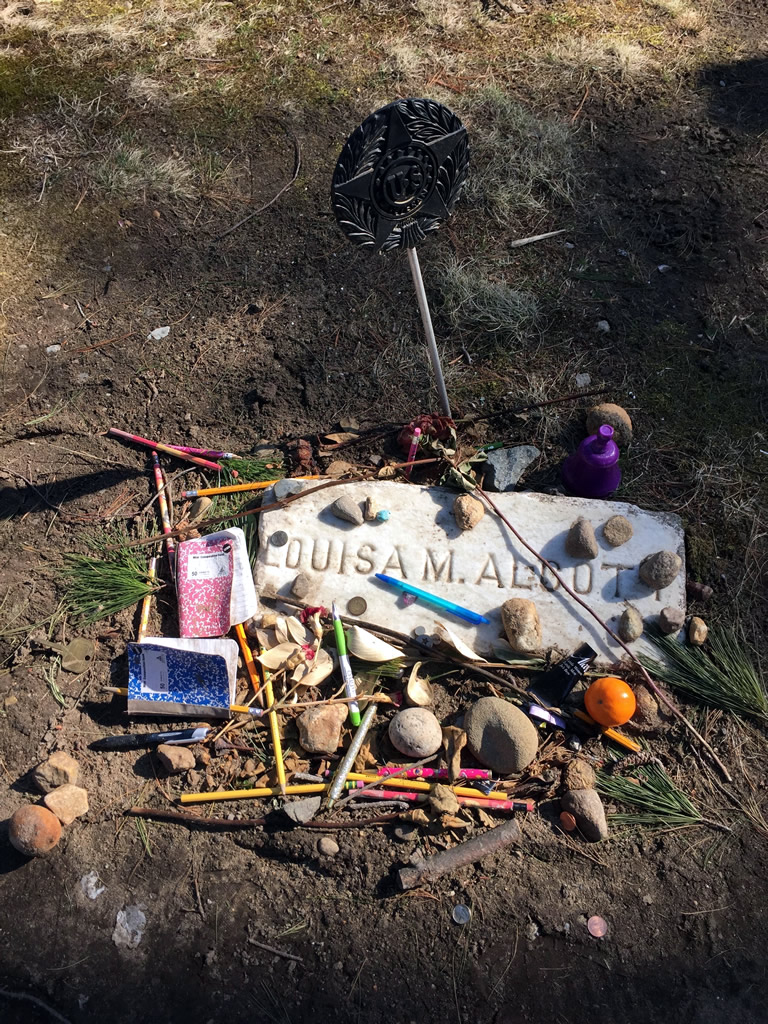
Louisa May Alcott Grave
Emerson Family
Farther along from the Alcott plot, you'll notice the huge quartzite boulder that serves as stone on the grave of Ralph Waldo Emerson (1803-1882). To the left of it is a more modest stone decorated with tulips marking the grave of Lidian Jackson Emerson (1802-1892). Other family members are nearby, some with histories inscribed on the back of their tombstones.
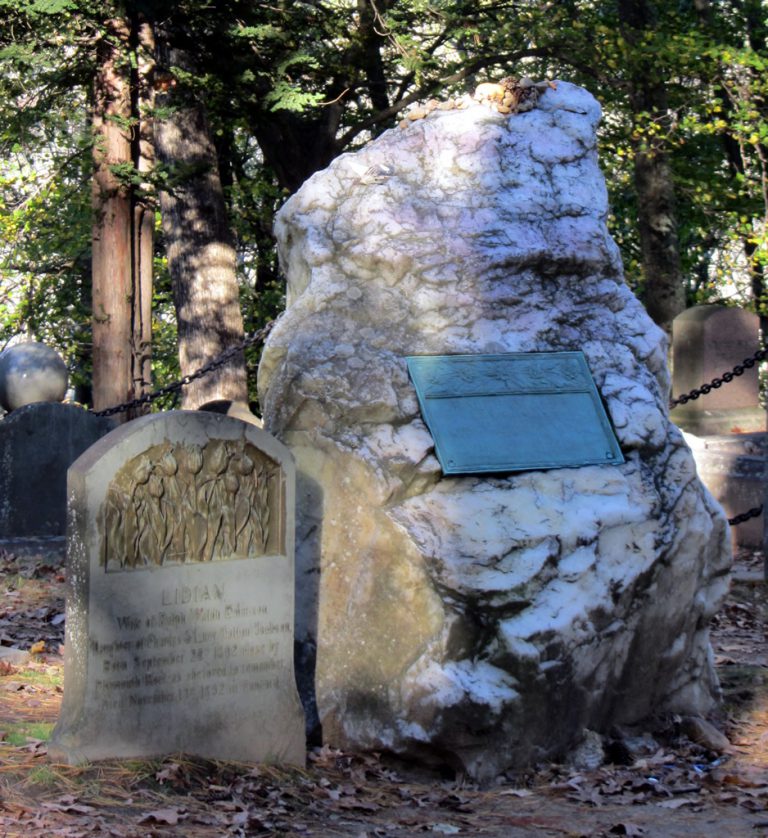
Emerson family graves
Ephraim Wales Bull
Down the slope opposite the Emerson plot is the grave of Bull (1806-1895), the “originator” of the Concord Grape, along with that of his son, Ephraim. Note the misspelling as “Ephriam” on his plaque.
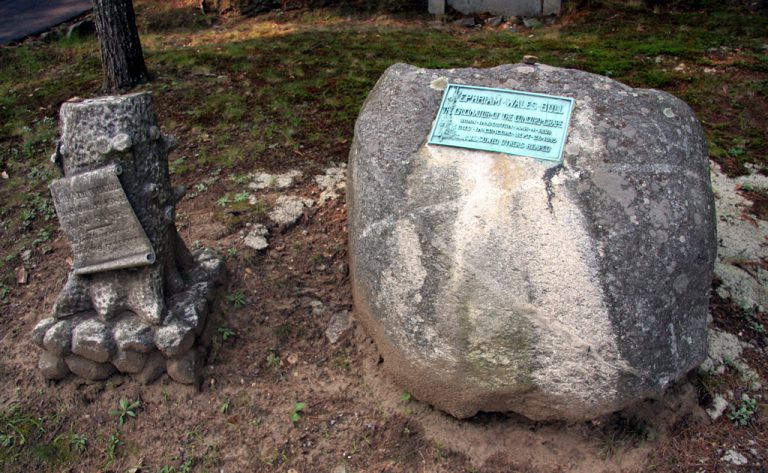
Ephraim Wales Bull, Senior, on the right; his son's smaller stone on the left.

They should have spelled Ephraim correctly...
French Family
Daniel Chester French (1850-1931) and Mary French (1859-1939) are buried on the ridge between Authors Ridge and the Melvin Memorial. Visitors put pennies in the wreath with the image of the Lincoln Memorial showing, in commemoration of French’s seated Abraham Lincoln statue (1920).
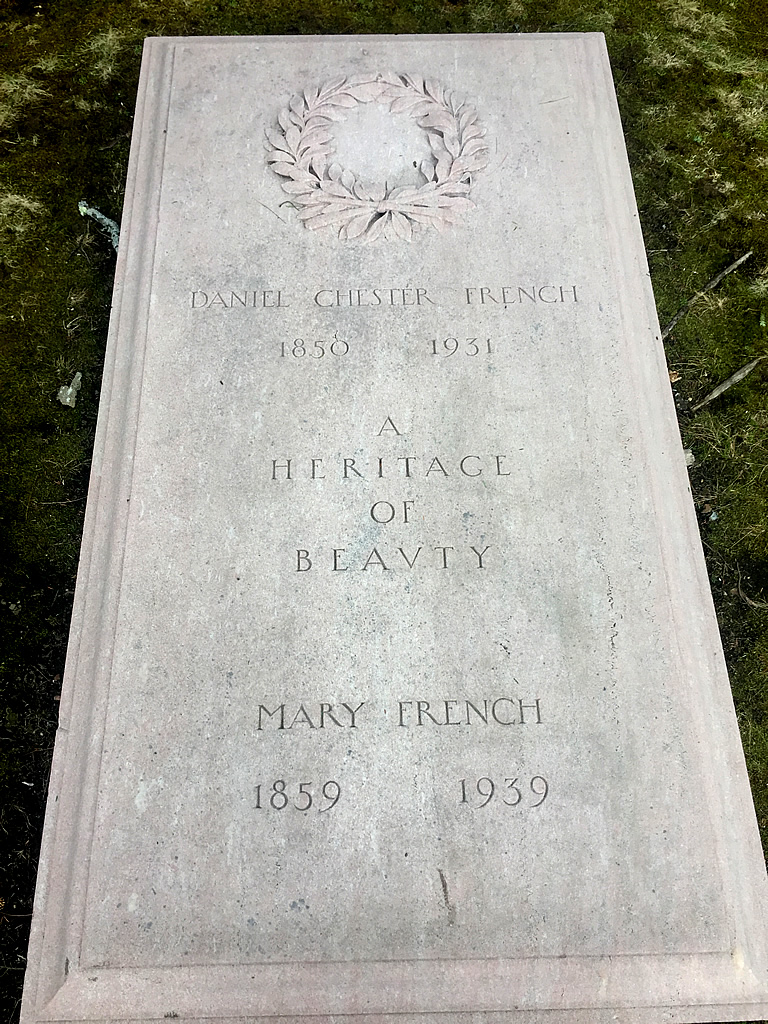
No pennies in the wreath when this photo was taken.
